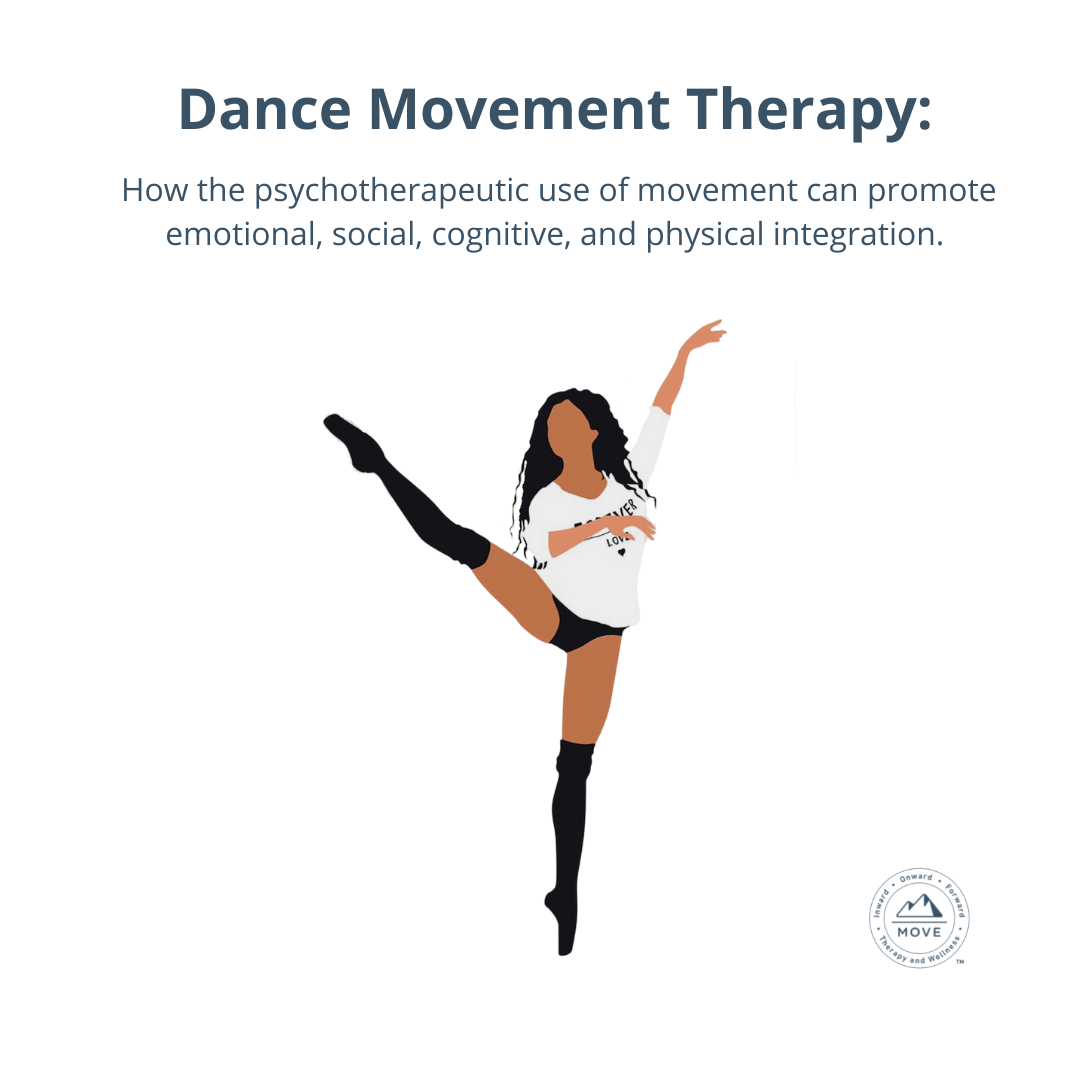“Movement is a basic form of communication that provides us with opportunities for socialization, the development of community and the experience of expressing our aliveness and our innermost thoughts and feelings.”
– Nana Koch
What is dance/movement therapy?
Dance/movement therapy promotes the connection of the mind, body, and spirit and is conducted by a registered or board-certified dance/movement therapist who has completed an accredited graduate program or alternate route program. As defined by the American Dance Therapy Association (ADTA) dance/movement therapy is the “psychotherapeutic use of movement to promote emotional, social, cognitive, and physical integration of the individual.”
Most dance/movement therapists are trained to use either Laban Movement Analysis (LMA) or Kestenberg Movement Profile (KMP) to understand their own movement preferences and that of their client’s. Both LMA and KMP can be used to aid an individual in understanding their own movement patterns and how they may influence or correlate to thought patterns. LMA and KMP can also be used to help the client increase their access to different ways of moving, and thus thinking, if that is their desire.
Perhaps one of the most important parts of dance/movement therapy is the therapeutic movement relationship that is developed through kinesthetic attunement and kinesthetic empathy. Through kinesthetic attunement the dance/movement therapist tunes into the client’s movements, behaviors, and emotions. The therapist senses their reactions in their own body by observing and taking on the client’s movements. By taking on the client’s movements the therapist is informed of the client’s possible experience and how they may be able to help their client. Through kinesthetic attunement, kinesthetic empathy develops in which the therapist is able to reflect on how the client might be feeling emotionally and experiencing their surroundings on an emotional level. Through this the therapeutic movement relationship develops in which the client and therapist are able to have a shared presence of mind, body, and spirit that allows healing to occur.
What does dance/movement therapy look like?
A typical dance/movement therapy session can look different depending on age, diagnosis, group vs. individual, background, therapy setting, and more. However, one characteristic will remain the same, the movement demonstrated and explored in session comes from the client and their lived experience. Meaning, that as a dance/movement therapist I would never force a client to do more movement than they are comfortable with, nor do I place my beliefs about movement onto a client.
A “typical” dance/movement therapy session with me begins with a check-in and a grounding breath or movement to prepare the client for the session. From there some clients may go straight into movement based on something that was discovered the week before. Sometimes clients come in and share a bodily sensation they are experiencing but are unsure what the sensation is connected to. From here I would have them describe the sensation so that I can try it on my body and then we move together so that we can find their answer.
For some clients we begin verbally until we find the “the nugget” of information that they want to explore in movement or until they get stuck. When a client gets stuck in a thought process or can’t find the emotion they are experiencing, we turn to the body as the knowledge source and explore through movement. Our bodies are like a map of our emotions and experiences, if we slow down and listen to our body it can tell us what it needs.
Tortora, S. (2006). The Dancing Dialogue: Using the Communicative Power of Movement with Young Children. Paul H. Brookes Publishing Co.
Young, J. (2017). The therapeutic movement relationship in dance/movement therapy: A phenomenological study. The American Journal of Dance Therapy, 39, 93-112. doi: 10.1007/s10465-017-9241-9
